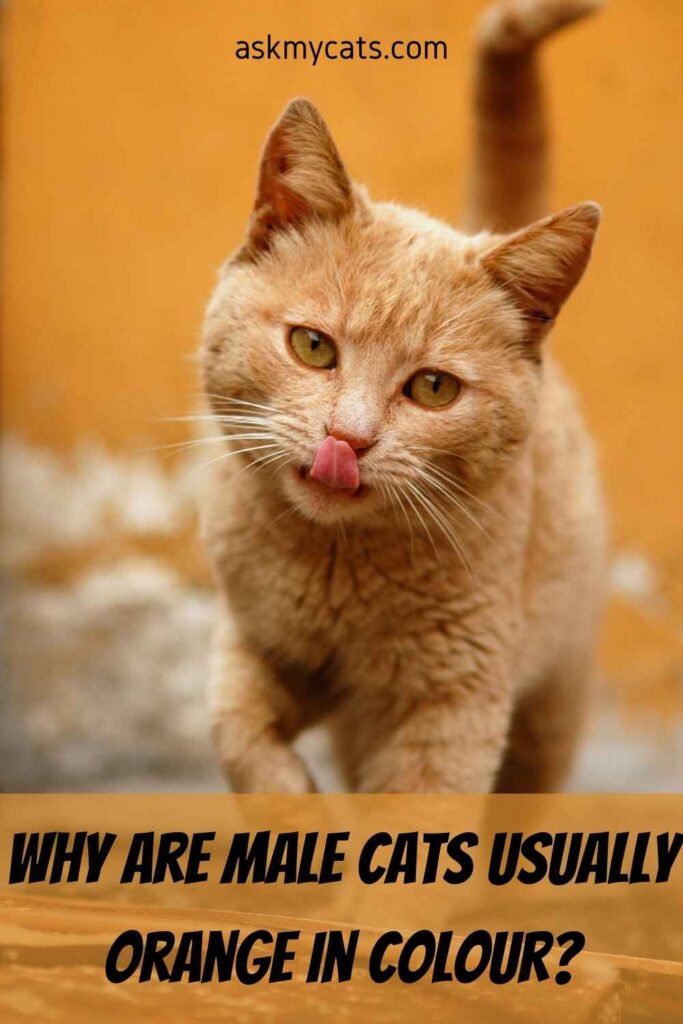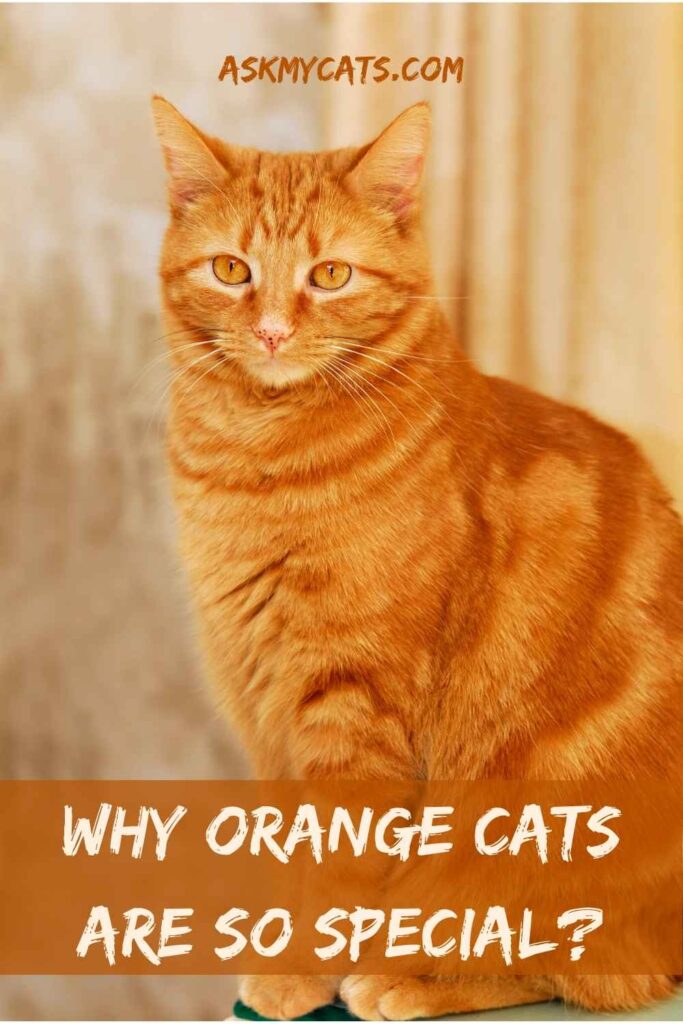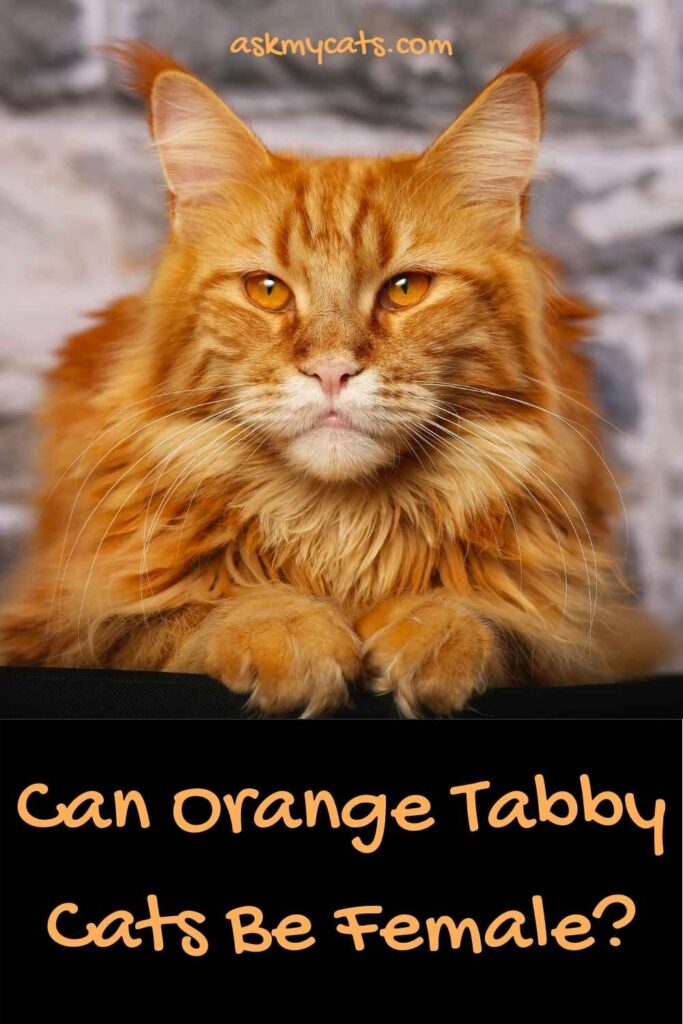The color of a cat’s hair, according to researchers at the University of California, Berkeley, can influence the chances of that cat being adopted.
The luckiest animals at a shelter full of unwanted animals aren’t brown, black, or white. They’re orange in color.
That isn’t fully correct. Male cats are generally orange in color. The gene for orange fur is located on the X chromosome.
Because females have two X’s and males have one X and one Y, a female orange cat must inherit two orange genes — one from each parent — but a male orange cat only need one, which he receives from his mother.


Give Your Cat the Perfect Day
Get the Free Ebook!
What Percentage Of Orange Cats Are Male?
Male cats account for about 81 percent of orange cats.
While female cats with the orange gene on both X chromosomes will inherit an orange coat, male cats with the orange gene on any chromosome will be orange.
Because the orange gene is far less common than the black gene in the general cat population, the likelihood of possessing two orange genes is substantially lower.
As a result, male orange cats are more common than female orange cats.
What does all of this entail for their children?
If a mother cat is orange, her male kittens will be orange as well, regardless of their father’s color, and if a mother cat is a tortoiseshell (black, white, and orange), half of her male kittens will be orange and the other half will be black.
Both the mother and father must be orange to produce an orange female kitten. Half of the female kittens will be orange if the mother cat is tortoiseshell and the father cat is orange.
Why Are Male Cats Usually Orange In Colour?
A cat’s color is determined by his or her genetic composition and the chromosomes he or she acquired. Melanin determines the ultimate coat color, and an orange coat is the consequence of one gene influencing the expression of another, resulting in the transformation of black pigment into orange.

Because the color of a tabby is determined by a sex-linked gene, an orange female must inherit two orange genes (one from each parent), but a male red cat needs just one.
All orange cats are tabbies, while solid red display cats are generally a low contrast ticking tabby because any red hue is epistatic.
Cats may be traced back to early humans and are thought to have descended from the African wildcat, according to history.
Although it is impossible to pinpoint exact instances of cat evolution due to a paucity of archaeological findings of cat bones, domestic cats may now be found on all continents except Antarctica.
Early Neolithic farmers in the Mediterranean region may have domesticated cats about 10,000 years ago to help reduce rodent populations.
The cat moved along trade routes throughout medieval times and became a regular aboard ships as an independent-minded seafarer.
Because red cats are tabby cats, they come in a variety of hues and coat patterns, including classic stripes, bullseye patterns on the side, ticking tabby, spotted tabby, patched tabby, and fishbone, and mackerel-striped.
While blue eyes are common in kittens, the color of their eyes typically changes as they get older.
Despite the fact that some cat owners see tabbies as commoners, a tabby cat is likely to see his or her owner as their landlord and enslaved daily servant.
Having an orange tabby, whether male or female; will brighten your life and provide curb appeal to your property.
Youy might also like to check out how big do tabby cats get
Is It True That Most Ginger Cats Are Male?
Yes, but not all of them. The X chromosome contains the ‘ginger gene,’ which generates the orange color.
Because females have two X chromosomes, they require two copies of the ginger gene, whereas men only require one.
Female ginger cats are a little tougher to come by because ginger genes act differently in cats than they do in people.
This means that for every female ginger cat, there are around three males. Tortoiseshell or ginger females are fathered by ginger tom cats. If both parents are ginger, all of the kittens will be ginger as well.
You will also like to read about how long do tabby cats live
Why Orange Cats Are So Special?
Because orange cats are more loving, they are regarded to be the friendliest of all cats.

However, this finding might be due to confirmation bias or a self-fulfilling prophecy, with cat owners seeking to validate their own prejudices.
There are, however, several possible explanations for why orange cats are more loving.
Because the gene that causes orange hue is sex-linked, an orange cat’s chances of being male vs female are substantially higher.
Although the evidence isn’t conclusive, male cats are thought to be slightly friendlier than female cats, which might explain orange cats’ affection.
As a result, the fact that tortoiseshell cats are virtually usually female may help to explain “tortitude.”
In contrast to urban contexts, orange cats are more abundant in rural (less congested) areas. This research shows that orange cats may have a better chance of reproducing in certain social situations.
Cats in rural areas have a more polygynous mating system, which means that male cats mate with several female cats whereas females mate with only one male.
Female and male cats in metropolitan areas, on the other hand, have several partners.
Orange cats are less prevalent in locations where there is a higher chance of death. This data suggests that orange cats are more prone to participate in life-threatening activities.
Orange cats have more sexual dimorphism than black cats. Male orange cats weigh more than female orange cats, while female orange cats weigh less than male orange cats. This trend has already been seen in Australia.
These surprising trends prompted the researchers to propose a theory: orange cats (particularly male cats) may use a distinct reproductive strategy as a result of morphological and behavioral differences.
Also, check out why are orange tabby cats so affectionate
Orange male cats, in particular, may enjoy greater social status and thus reproductive success in rural areas where females typically only mate with one male due to their larger size (and likely more aggressive due to previously documented links between a male cat’s body size and aggression toward other cats).
In rural locations, orange male cats may be more socially dominating, resulting in higher reproductive success. Their social prestige, on the other hand, may not go as far in metropolitan surroundings.
Female cats in these congested situations are more likely to mate with a large number of male cats. As a result, sperm rivalry rather than physical conflict between male cats determine reproductive success.
As a result, in an urban context, orange male cats’ competitive attitude may increase their danger of mortality (e.g., through fights with other cats or animals), lowering the proportions of orange cats.
Larger male cats are more dominating and aggressive, resulting in both better reproductive success and higher mortality risk, according to previous research.
This study finds numerous distinct traits of orange cats, but it does not explain why orange cats are more human-friendly. Is it possible that this stereotype is based on the risk-taking habits of these unique cats?
Can Orange Tabby Cats Be Female?
In fact, male orange tabbies account for up to 80% of the population, making female orange tabbies a bit of a rarity.

The ginger gene in cats operates a little differently than it does in humans, according to the BBC’s Focus Magazine; it is located on the X chromosome.
To become a ginger cat, male cats only need one copy of the gene; however female cats need two copies of the gene since they have two X chromosomes.
Male orange tabby cats are the majority, but not all. The male-to-female ratio of orange tabby cats is around 80:20.
In my practice, we have a lot of female orange tabby cats.
A female orange tabby cat does not have monetary worth in and of itself. Cats with calico or tortoiseshell patterns, on the other hand, are usually invariably female.
This is how it goes.
Two X chromosomes are required to have black and orange in the same cat. The presence of two X chromosomes indicates that the cat will be female.
Male cats, often known as XY cats, require a Y chromosome.
A genetic mutation in cats can occur during embryonic development, resulting in a kitten with an extra chromosome: XXY.
Because of the two Xs, the cat may be both black and orange. It’s a man because of the Y. This is how a tortoiseshell or calico male cat is born.
Male tortoiseshell and calico cats are scarce (one in every 3,000), so don’t get your hopes up about breeding these exotic cats for profit. Most tortoiseshell and calico male cats are infertile as a result of this mutation.
You might also like to know more about tabby cat personality
Frequently Asked Questions
Are female orange cats worth money?
A female orange tabby cat does not have monetary worth in and of itself. Cats with calico or tortoiseshell patterns, on the other hand, are usually invariably female. … Male tortoiseshell and calico cats are scarce (one in every 3,000), so don’t get your hopes up about breeding these exotic cats for profit.
Is a ginger cat rare?
Females must have the ‘O’ chromosome on both ‘X’ chromosomes to be ginger; if they have ‘Oo’ instead, they will be calico or ginger. Females are less likely to be ginger than men since there are so many more potential combinations. As a result, just 20% of females are ginger.
Do ginger cats have different personalities?
Although early socialization has the most impact on an adult cat’s personality, anecdotal evidence suggests that cats’ personalities differ by color. Ginger male cats are known for being bold, talkative, and energetic. Female Ginger cats are regarded to be calmer and quieter than their male counterparts.
Final Words
While it’s true that orange tabbies have a larger male-to-female ratio, the ratio is closer to 80 percent male to 20% female. And it has nothing to do with magic; it has everything to do with genetics.
The orange coloration is caused by the X chromosome. Females have two Xs, whereas men have XY.
As a result, a female orange tabby cat needs the orange genes to be passed down from both the father and the dam.
Males, on the other hand, just require the orange gene from their moms.
Ask your questions in the comments section below!
